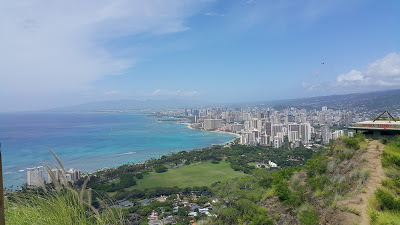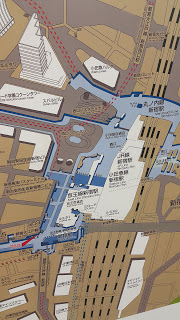Last Saturday, a friend of mine happened to be in Tokyo as she’d been working here that week. She’s been here many times before and decided on the meeting spot of Shinjuku Station – East Exit.
Her rationale was that it’s a busy station and a lot of people arrange to meet there so it must be a good meeting spot.
It is.
If you know the station.
I was 30 minutes early to the station and arrived by train.
I was an hour late for her spotting me – apparently I stand out in a sea of dark-haired mostly shorter people.
An hour is a long time to find someone in a station so that should give you some idea of the size of the station. It’s even bigger than what you’re probably thinking.
From 1885, Shinjuku Station has grown into the world’s busiest transport hub and even has this honour in the Guinness Book of Records.
Over 3.5 million people go through this station each day. Yes, you read that correctly, over 3.5 million people. That’s half the population of Hong Kong, about 800,000 people less than Sydney’s population and 15% of Australia’s going through one station each and every day.
Imagine if that many people went through any of the aforementioned’s public transport hubs. Wow!
Lucky they count based on turnstile use. I would have skewed the numbers if it was based on passing by particular points. I must have walked in front of security cameras multiple times as I did laps of various sections before I understood the scale of the place. At one stage, I walked a complete circle.
It connects all of Tokyo via inner city rail, commuter rail and metro lines. Five different rail systems use this station. I am yet to find one app, map or site that has all rail systems marked.
Through Shinjuku Station, you can walk to at least five other stations which means there’s over 51 platforms accessible from Shinjuku Station. I actually left through one of these and didn’t realise it wasn’t the same station. It meant that I needed to change trains part the way through my journey home!
There’s various underground arcades and eight shopping complexes, with restaurants, above the station. It’s an indoor labyrinth with no David Bowie (have a brief break here to spin out that this film was released in 1986, then move on).
If you happen to make it outside, there is a bus terminal for local and long-distance buses. It’s a lot less daunting than the train station itself.
So with all of this, there are a lot of signs to give direction. Mostly, these are relatively straightforward. Except if looking for the East Exit and you’re no-where near a Japan Rail East (JR East) Platform.
I easily found the sign for the West Exit and deduced that the East Exit would be in the opposite direction.
I was wrong.
After following the other nearby signs and trying all the other paths for some distance, it only left the West Exit sign to follow. I continued following these signs and checked various maps along the way to realise that walking West was taking me toward the East Exit.
Sometimes things aren’t always as they appear.
 |
| Well earned meal after wandering around for an hour |
I guess that’s to be expected in a station of over 200 exits!
* Thanks to Alex Lloyd for the title to this post.
Note – before anyone starts asking why we didn’t phone, message etc, we tried that however, for various reasons, we weren’t able to connect electronically.


